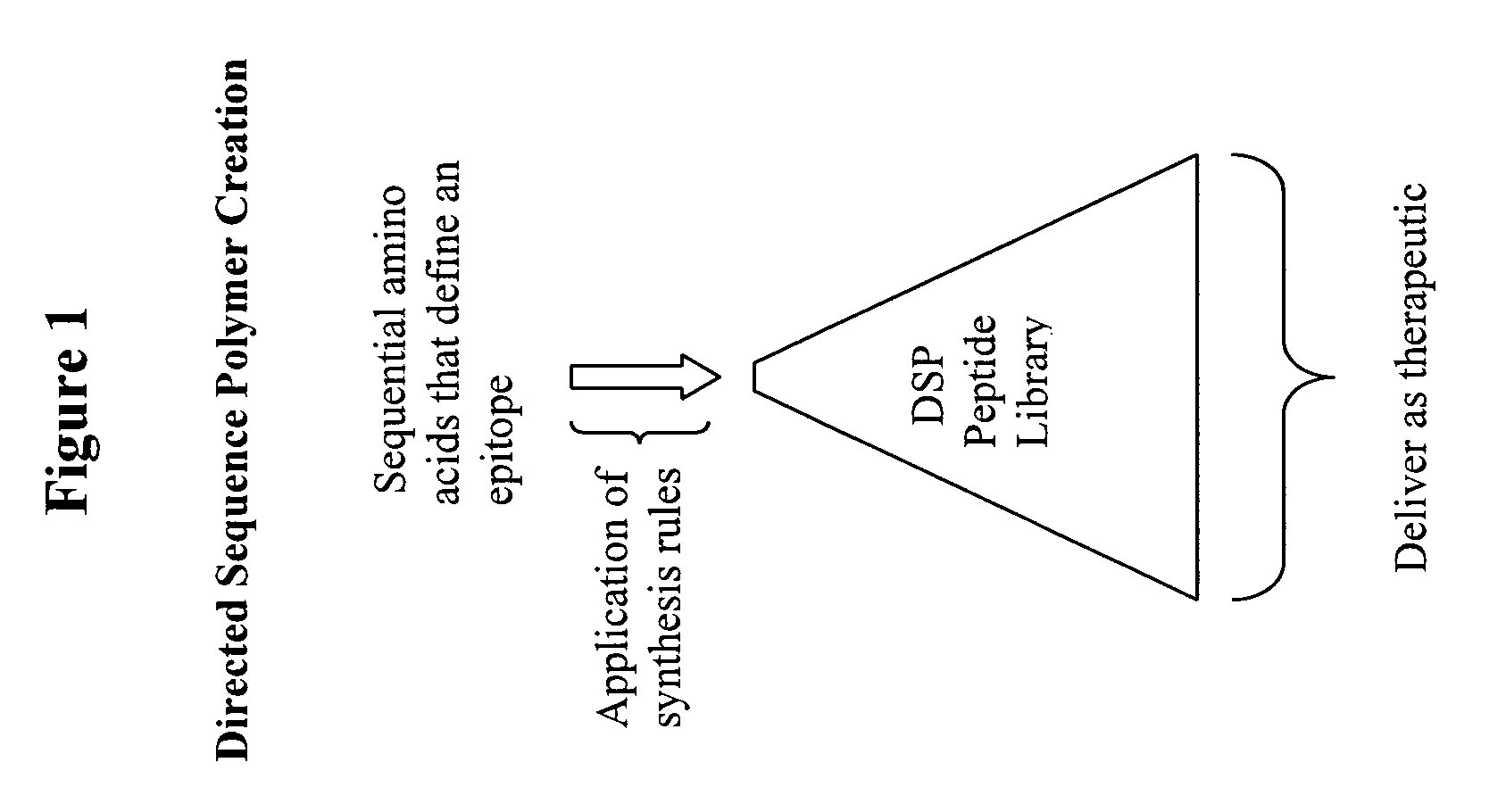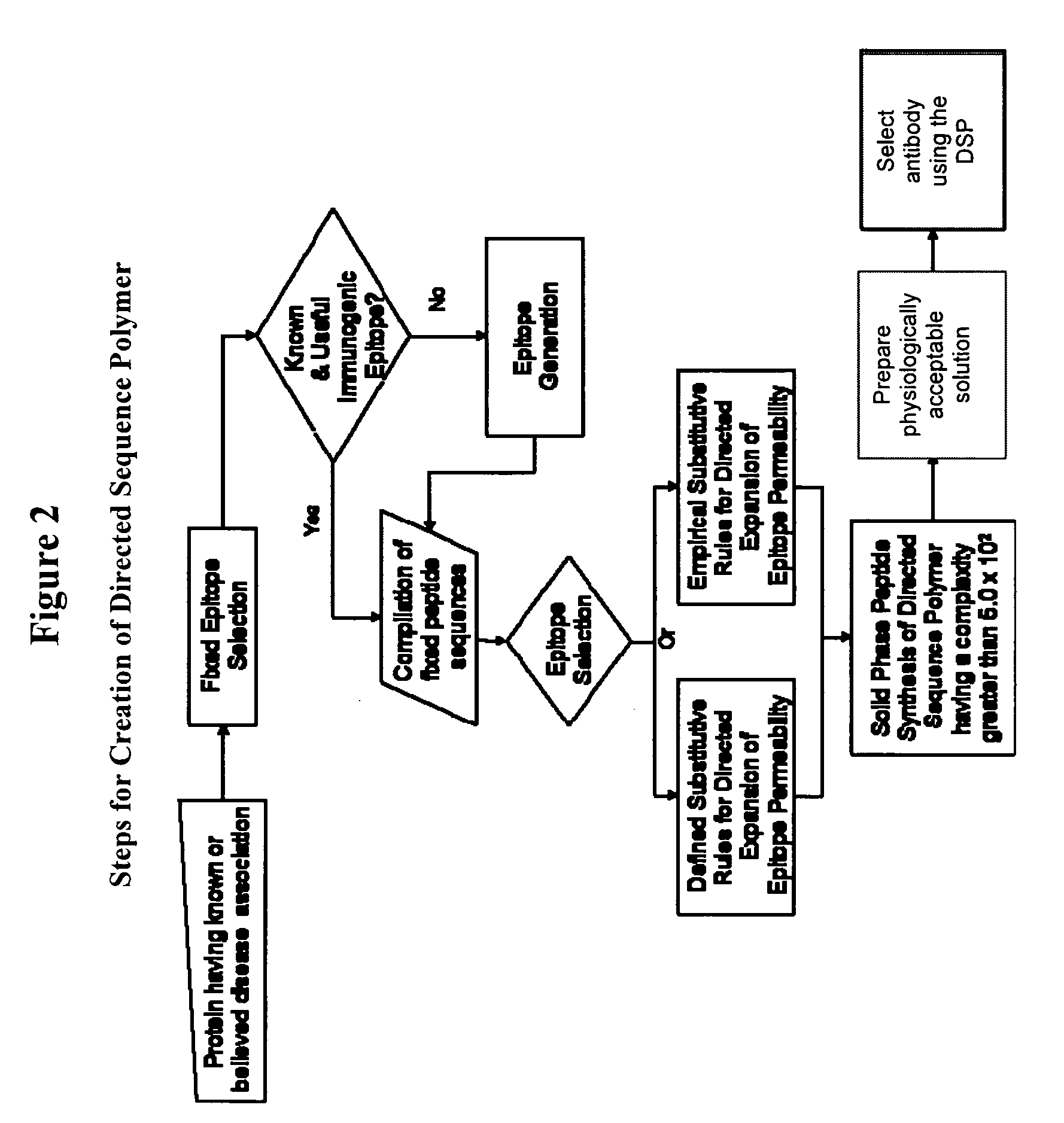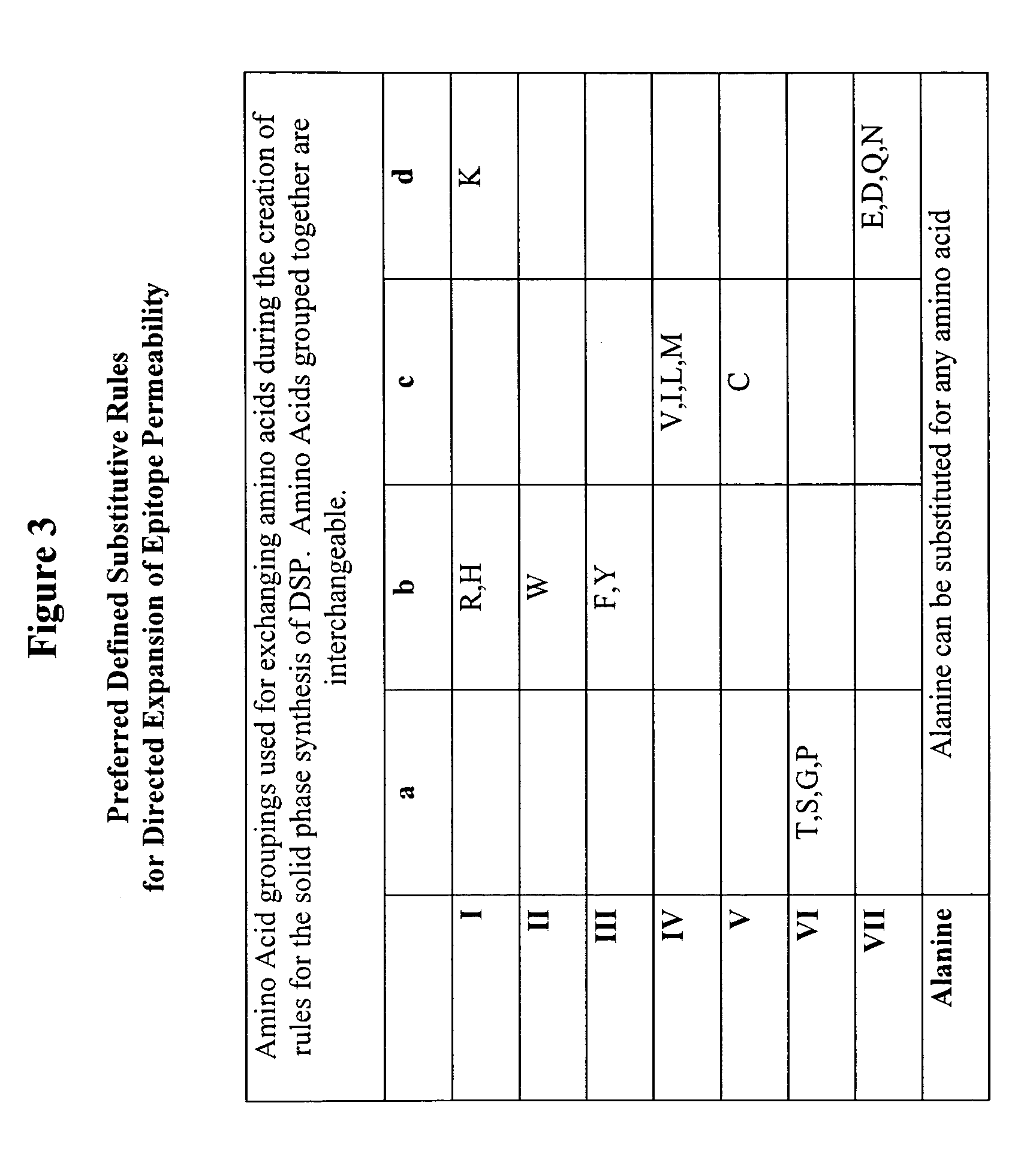Methods for the directed expansion of epitopes for use as antibody ligands
a technology of epitopes and directed expansion, which is applied in the field of directed expansion of epitopes for use as antibody ligands, can solve the problems of not ensuring therapeutic effectiveness, and reducing the efficacy of therapeutic or prophylactic antibodies that compete,
- Summary
- Abstract
- Description
- Claims
- Application Information
AI Technical Summary
Benefits of technology
Problems solved by technology
Method used
Image
Examples
example 1
Preparation of a DSP Composition from Fictitious Base Peptides
[0123]For ease of understanding, as an illustration, preparation of a DSP composition deriving from two fictitious peptide sequences, representing a known epitope, is described and shown in the table depicted in FIG. 6. In this illustration, the cassettes consist of five amino acids each, (x1, x2, x3, x4, x5=THMCE in y1 and PWKNA in y2).
[0124]THMCE is defined as having an input ratio of a=7, b=1, c=1, d=1, e=10. PWKNA is defined as having an input ratio of a=1, b=3, c=3, d=3, e=20. For synthesis, the identity of group of amino acids occupying each amino acid position for each peptide is determined using the preferred method of amino acid substitution described by Kosiol et al., J. Theoretical Biol. 228:97-106, 2004, as shown in FIG. 4 (or less preferably an equivalent means of systematically altering amino acids), and the overall ratio of amino acids that occupy each of such positions in the resulting collective DSP compo...
example 2
Preparation of a DSP Composition from Gp100 (a.a. Residues 154-162) As a Source Peptide
[0128]FIG. 7A-B shows an example of the application of the DSP Synthesis Rules using Gp100 (a.a. residues 154-162) as a source peptide. The methods and rules to define the identity of amino acids for each position of the resulting peptides are described above in Example 1. As with Example 1, the DSP composition is synthesized using a solid phase peptide synthesis method.
example 3
Preparation of a DSP Composition from an HLA Peptide as a Source Peptide
[0129]FIG. 8A-B shows examples of the application of the DSP Synthesis Rules using an HLA-derived peptide and an HLA mimic-derived peptide as source peptides. The methods and rules to define the identity of amino acids for each position of the resulting peptides are described above in Example 1. As with Example 1, the DSP composition is synthesized using a solid phase peptide synthesis method.
PUM
| Property | Measurement | Unit |
|---|---|---|
| Fraction | aaaaa | aaaaa |
| Composition | aaaaa | aaaaa |
| Affinity | aaaaa | aaaaa |
Abstract
Description
Claims
Application Information
 Login to View More
Login to View More - R&D
- Intellectual Property
- Life Sciences
- Materials
- Tech Scout
- Unparalleled Data Quality
- Higher Quality Content
- 60% Fewer Hallucinations
Browse by: Latest US Patents, China's latest patents, Technical Efficacy Thesaurus, Application Domain, Technology Topic, Popular Technical Reports.
© 2025 PatSnap. All rights reserved.Legal|Privacy policy|Modern Slavery Act Transparency Statement|Sitemap|About US| Contact US: help@patsnap.com



